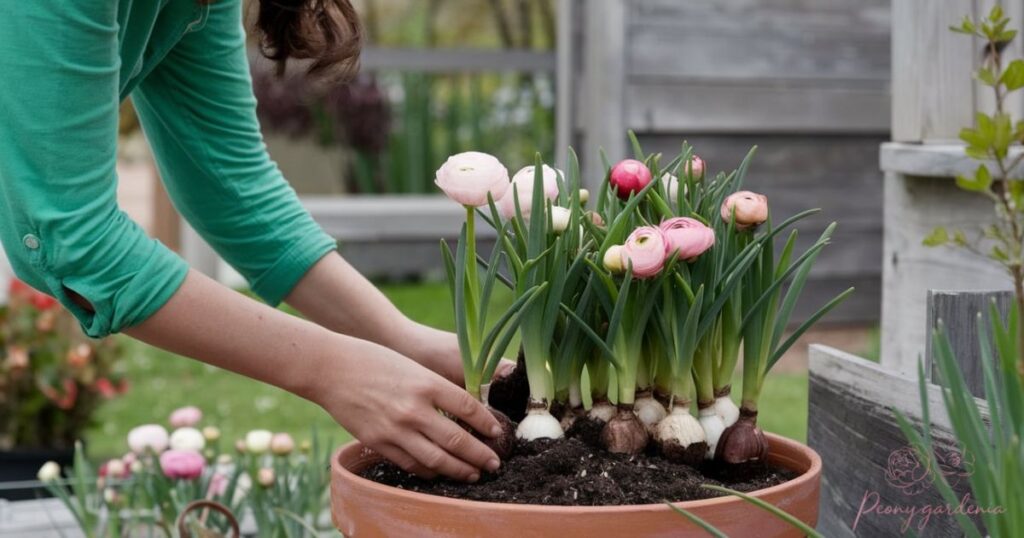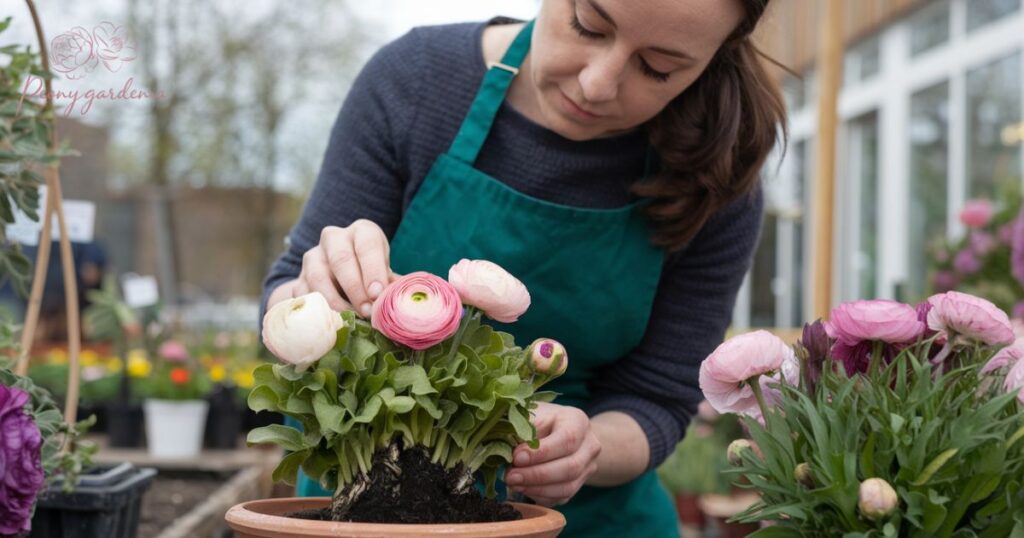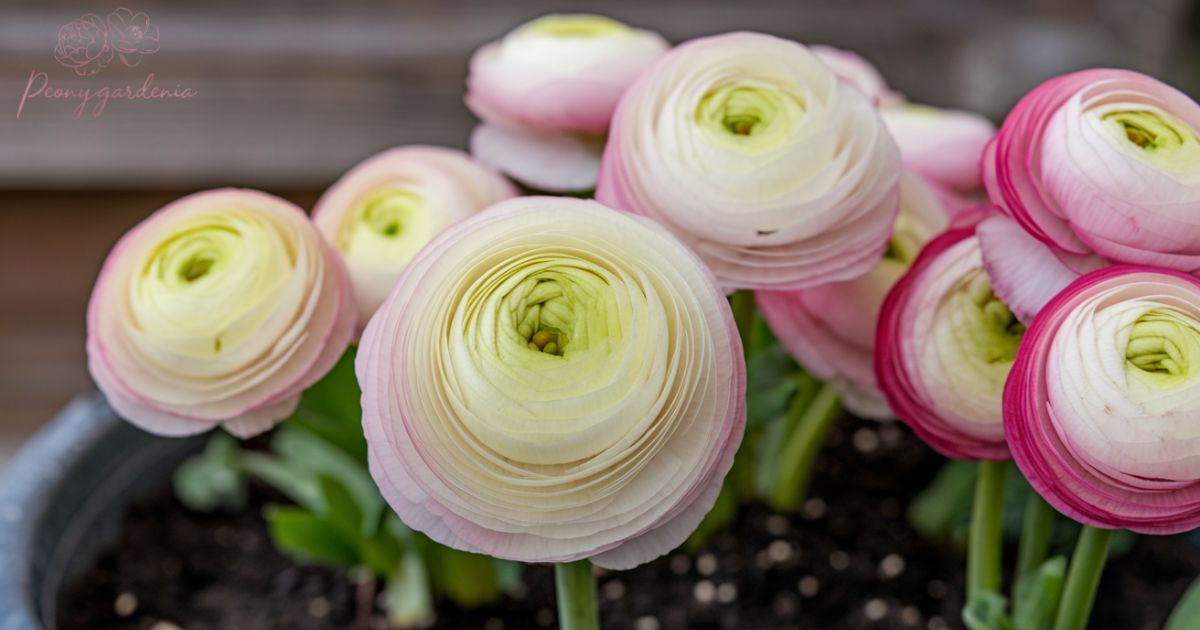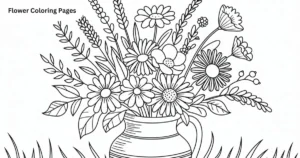Growing ranunculus involves planting corms in well-drained soil with plenty of sunlight. Water regularly, but avoid over-watering. Provide space for the plants to grow. After blooming, care for the corms to replant next season.
Ranunculus flowers add color and beauty to any garden. If you’re wondering how to grow ranunculus, it’s easy with the right care. Plant them in well-drained soil and a sunny spot. With the right steps, you can enjoy vibrant blooms all season long.
To grow ranunculus, start by soaking the corms in water for a few hours. Plant them in well-drained soil with good sunlight. Space the corms 4-6 inches apart and cover them with soil. Water regularly, but avoid overwatering, and enjoy beautiful flowers when they bloom.
Understanding Ranunculus

Ranunculus are beautiful flowers known for their bright colors and layers of soft petals. They look like roses but are smaller and more delicate. These flowers grow from corms, which are bulb-like structures that store energy. Ranunculus love cool weather and plenty of sunlight.
They come in many colors, such as pink, red, yellow, and white. People grow them for their beauty, especially in gardens and flower arrangements. Ranunculus need well-drained soil and regular care to grow well. With the right conditions, they bloom in spring, adding charm and color to any garden or bouquet.
The most popular varieties include:
- Tecolote Ranunculus: Known for large blooms and vibrant colors.
- Cloni Ranunculus: Produces large, nearly peony-like flowers.
- Picotee Ranunculus: Features a unique two-tone effect on petals.
Planting Ranunculus

Planting ranunculus is simple. Start by choosing a sunny spot with well-drained soil. First, soak the corms in water for a few hours. Then, dig small holes about 2 inches deep. Place each corm in the hole with the claws facing down. Space the corms about 4 to 6 inches apart.
Cover them gently with soil and water lightly. Make sure the soil stays moist, but not too wet. Plant ranunculus in early spring or fall, depending on your climate. With care, they will grow into beautiful flowers, adding color to your garden.
Read More: Peony Flower Cutting: A Guide to Propagation and Maintenance
Caring for Ranunculus

Ranunculus requires regular care to flourish. Here are key aspects to focus on:
- Watering: Keep the soil evenly moist but not soggy. Overwatering can lead to rot, so it’s important to water only when the top inch of soil feels dry.
- Fertilizing: Use a balanced, water-soluble fertilizer every 2–3 weeks during the growing season. A fertilizer high in phosphorus (like a 10-10-10 formula) will encourage more blooms.
- Mulching: Applying a light layer of mulch around the plants helps retain moisture and regulate soil temperature, which is especially useful in warmer climates.
- Staking: Tall varieties of ranunculus may need support. Use stakes or small plant supports to keep them upright, especially in windy areas.
Dealing with Pests and Diseases

Dealing with pests and diseases is important for healthy ranunculus plants. Common pests include aphids, which can damage leaves. To control them, use insecticidal soap or neem oil. Slugs and snails also harm plants by eating the leaves. You can prevent this by using slug pellets or crushed eggshells around the base of the plants.
For diseases, powdery mildew can appear as white spots on leaves. It spreads in damp, crowded conditions. To prevent it, ensure good airflow and avoid overhead watering. Lastly, root rot happens from overwatering, so always check the soil drains well before watering.
Harvesting and Enjoying Blooms

Harvesting ranunculus flowers is simple. Wait until the buds are fully formed but not open. The best time to cut them is early morning or late evening when the stems are most hydrated. Use sharp scissors or pruning shears to avoid damaging the plant.
Cut the stems long, leaving enough to enjoy in a vase. Once cut, immediately place the stems in cool water. Keep the flowers in a cool spot, away from direct sunlight, to help them last longer. Ranunculus can stay fresh for up to 10 days, making them perfect for bright floral arrangements.
Post-Bloom Care
After your ranunculus blooms fade, it’s important to care for them properly. Allow the leaves to yellow and die back naturally. This process helps the corms store energy for the next season. Once the foliage is completely dried, carefully dig up the corms.
Clean off any soil and let them dry in a cool, shaded area. After drying, store the corms in a breathable bag or container. Keep them in a dry, cool place until it’s time to plant again. In warmer climates, you may leave the corms in the ground. Just ensure they’re well protected from extreme weather.
Storing Corms:
- Dig up the corms carefully after the foliage has yellowed and dried.
- Clean off excess soil and allow them to dry completely.
- Store in a cool, dry place in a breathable bag or container.
Conclusion
Growing ranunculus can be a truly rewarding experience for any gardener. By choosing the right location with plenty of sunlight and well-draining soil, you set the foundation for healthy growth. Starting with high-quality corms and soaking them before planting ensures they are primed for sprouting.
Regular watering, fertilizing, and proper spacing help the plants thrive and produce stunning blooms. While they require some attention to prevent pests and diseases, ranunculus are relatively easy to care for. If you’re wondering how to grow ranunculus, following proper planting and care techniques will ensure they flourish in your garden. After the flowers bloom, proper post-bloom care, including drying and storing corms, ensures they can be replanted in future seasons.
FAQs
When is the best time to plant ranunculus?
Plant ranunculus in early spring or fall, depending on your climate.
How deep should I plant ranunculus corms?
Plant corms about 2 inches deep with the claws facing down.
Do ranunculus need direct sunlight?
Yes, ranunculus thrive in full sun with at least 6–8 hours of sunlight daily.
How often should I water ranunculus?
Water ranunculus regularly, keeping the soil moist but not soggy.
Can I grow ranunculus in containers?
Yes, ranunculus can be grown in containers with proper drainage and sunlight.









